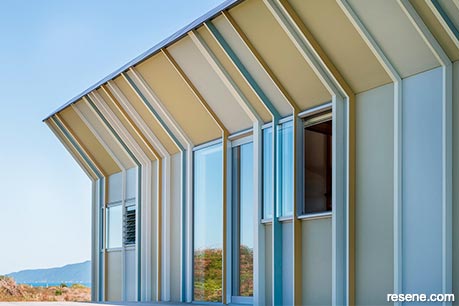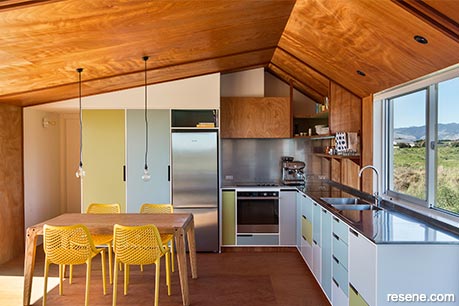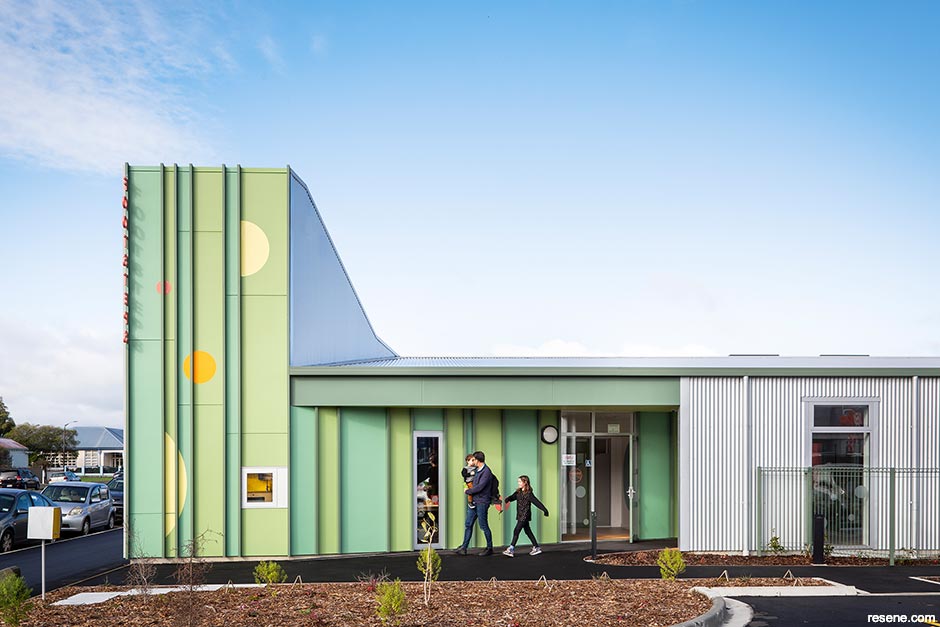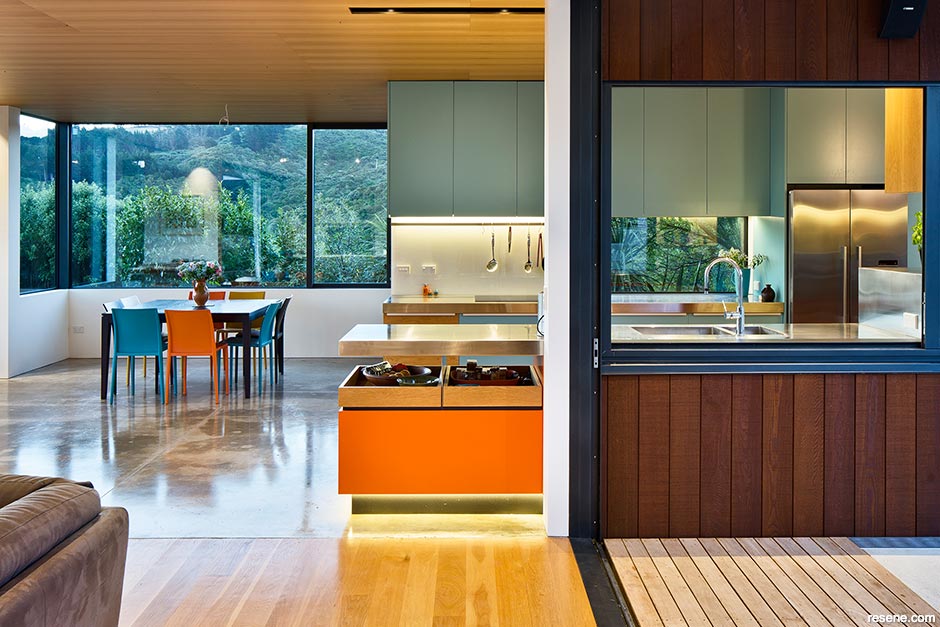From BlackWhite magazine - issue 04, over the rainbow
The NZIA Fellow shares wisdom he's garnered in the first three and a half decades of his career.

When you’re coming out of high school, it can be difficult to know what career path to pursue – especially if you feel pulled in multiple directions by different passions. As a young person growing up in Hamilton, nature-loving Gerald Parsonson was interested in becoming either an entomologist, a marine biologist or an architect. But after completing a year of biology and physics at Waikato University, it became clear the first two options weren’t the right fit. Gerald applied to both the University of Auckland and Victoria University of Wellington’s School of Architecture programmes, and though he was accepted into both, he ultimately decided to go to Wellington at the suggestion of a high school teacher.
“I had no real idea about architecture and didn’t know anyone in the industry,” Gerald explains. “My father wanted to be a builder but ended up doing accountancy. He was always making things and a lot of that rubbed off.”
After graduating, he worked for Craig Craig Moller then registered and spent some time exploring overseas. “I travelled with a fellow architect, who is a good friend of mine, and his sister. We drove through France and Italy in a Citroen 2CV, which is essentially a flying tent, with a sketchbook and a copy of Kenneth Clark’s Civilisation in hand, staying in campgrounds and small accommodations. As wide-eyed young New Zealanders, we got to see some of the great public spaces, museums, art galleries and buildings from cities to hill town villages.”


Though he visited many inspiring spots, Gerald’s favourite was Axel Munthe’s villa. “It’s located in the village Anacapri on the island of Capri, just off the coast from Naples, and it’s built on the ruins of Emperor Tiberius’s villa on cliffs 300 or so metres high overlooking the Mediterranean. It’s now a national monument.”
Gerald put down roots in Wellington and, in 1987, started his own practice as an opportunity to focus on architecture that would respond uniquely to the New Zealand context. Thirty-five years on, he continues to do just that through thoughtful, deliberate design that embraces and celebrates nature and colour. Among the many awards on his shelf is Resene’s highest honour: the Resene Total Colour Lifetime Achievement Award.
Gerald shares more about his journey so far, favourite projects, invaluable advice and the Resene colour palette he’s curated for a soon-to-be-built home.
What was your impression of the architecture in New Zealand prior to starting your practice?
I graduated not particularly knowing much about design and was finding my way. I had an in-built love of nature and what we had in New Zealand. Alongside this, I saw that much of our architecture was generic and influenced from overseas or from product manuals, so started to look to draw inspiration from building sites and the local and wider environment. For example, our Manly Street Beach House was a reaction against suburbia sprawling over the beautiful rolling dunelands of the Kāpiti Coast. There were many lines of local influence threaded through this. The most obvious one is the referencing to the directness of the fibro baches that were once much more common.
What are your favourite types of projects to work on and why?
Any project is a favourite project if there is the opportunity to do it well. It is very satisfying completing a well-detailed, bespoke new home that relates well to its setting, but just as satisfying is a building that is very economical and still presents clear, unique and coherent architecture. Our recent Footsteps Preschool in Palmerston North would be an example of this. In these times of housing shortages, where the gap between rich and poor is ever stretching and there is a need to create more sustainable, denser and well-planned cities, I think it is important to work hard and contribute to the multi-unit and mixed-use space. We have a couple of large multi-unit projects in their early stages currently, which is exciting for us. Separate to this, we had a co-housing group set up through our practice, which came close to purchasing a site, but just missed out to a developer a year ago – which was a shame.

Is there a project that stands out as being a particularly rewarding highlight of your career so far, and what made it so special?
The Gibbs House in Eastbourne put my practice on the map. It is set at the bottom of a huge beech forest across the harbour from Wellington and looks out through the trees to the water. It is a long house that sits delicately between the trees, and the owners still live there. It is constructed from steel frames, treated pine boards and Eucalyptus Saligna joinery.
What would you suggest to someone who is feeling stuck in a rut or struggling with their creativity on a project?
When I was young and didn’t have much work, I was hungry and did a lot of research for each project. The older and more comfortable you get, with work coming in the door, the easier it is to get stalled or become complacent churning out the same old stuff – so staying excited is important. I find ways of moving things sideways or changing the day-to-day pattern helps; things like looking through fresh eyes at a site, lying in the sun for a while, studying the colours of the landscape, the light through the grass, the solidity of a cliff, researching local histories in my own way, picking up a pencil or paints, getting loose, going to art galleries or writing word strings or small poems prior to starting a project helps me.
What is the best piece of advice you’ve received that’s been helpful in your career?
I recall reading a biography on Bob Dylan where he said he liked the use of questions in art, because they are much more interesting than statements. Blowing in the Wind is one of his most famous songs that is musically simple but made up of entirely questions – making it intriguing, emotional and political all at the same time. Along similar lines, Welsh musician John Cale said, “the trouble with a classicist is that when he sees a tree, he paints a tree,” which to me, in relation to architecture, meant that it is much more interesting to create more deeply than just mechanically following a client’s brief, recent trends and using cool products. I challenged myself to explore ideas more deeply, trying to think as an artist as well as an architect to see what came up. Like anything in life, at times it has been easier and more successful than others.

Something we hear from many people we interview is that they wish they had more time – often this means time left in their career, but sometimes it’s just time to work on passion projects on the side. What would you do if someone could wave a magic wand and grant you more time?
I would like more time to research and paint pictures more. For me, it’s really enjoyable and helps me think creatively and I seem to be squeezing it into the gaps a lot of the time. Having said this, I am very happy and content with where things are, as you can have too much of a good thing and the bumps keep things real. There have been ups and downs, but I have really enjoyed my travels through life as an architect and the people I have met along the way.
If you could have dinner with one design icon – past or present, alive or not – who would it be and what would you talk about?
I would love to talk to Louis Kahn about his ideas and processes, as he managed to create some of the most incredibly architectonic buildings, from the Bangladesh Parliament Buildings to Kimbell Art Museum and houses. His work always connected strongly with its place and the materials forming the architecture. There are many books available on Kahn that give a great picture, but it would be amazing to talk with the man. I was lucky once to offer Glen Murcutt morning tea and had time for a chat with him while he was judging one of our projects for the Home of the Year awards.
What do you love about Resene?
Resene has a fantastic range of colours and time tested and well-researched products. Their responsiveness to architects is fantastic and they are always there to help. On occasions where we are looking for very specific colours that we can’t find on any charts, they are happy to mix up samples or match to a colour we have found. There is also a consciousness around sustainability and minimising harmful chemicals that we like.
What are your current favourite Resene colours?
On a home that is currently being built in Riversdale, we have used a combination of five colours that I really like together, which were chosen to reflect surrounding vegetation and dune flowers: Resene White Pointer, Resene Stack, Resene Woodstock, Resene Spring Rain and Resene Charm.
› To see more of Gerald and his team’s impressive portfolio, visit www.p-a.nz.
This is a magazine created for the industry, by the industry and with the industry – and a publication like this is only possible because of New Zealand and Australia's remarkably talented and loyal Resene specifiers and users.
If you have a project finished in Resene paints, wood stains or coatings, whether it is strikingly colourful, beautifully tonal, a haven of natural stained and clear finishes, wonderfully unique or anything in between, we'd love to see it and have the opportunity to showcase it. Submit your projects online or email editor@blackwhitemag.com. You're welcome to share as many projects as you would like, whenever it suits. We look forward to seeing what you've been busy creating.
Earn CPD reading this magazine – If you're a specifier, earn ADNZ or NZRAB CPD points by reading BlackWhite magazine. Once you've read an issue request your CPD points via the CPD portal for ADNZ (for NZ architectural designers) or NZRAB (for NZ architects).